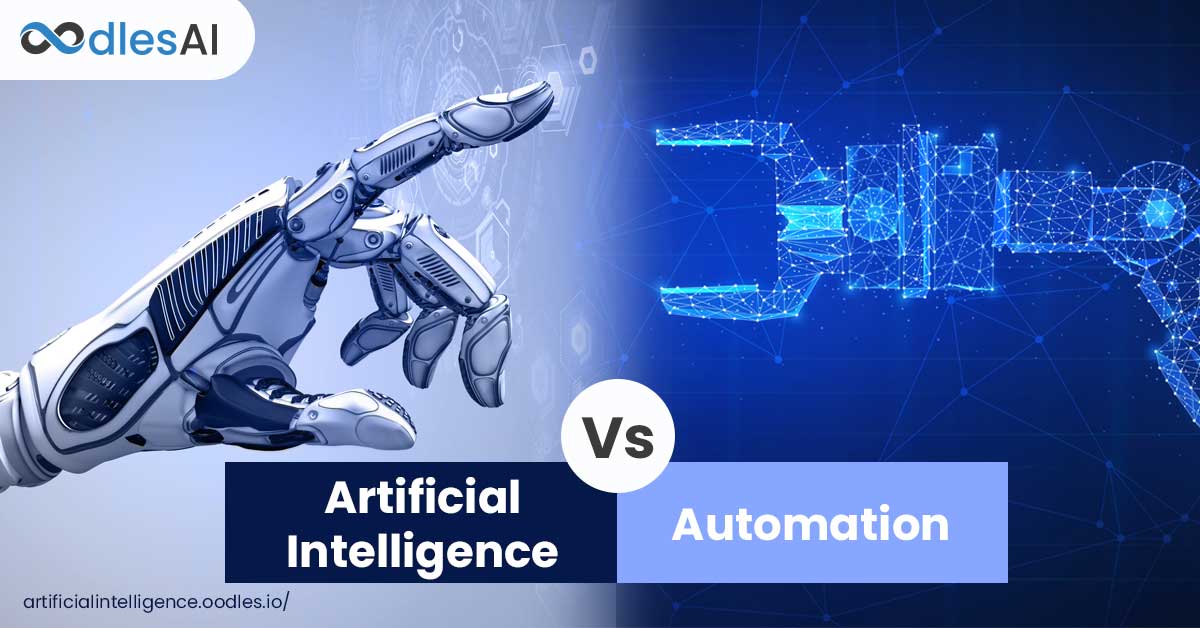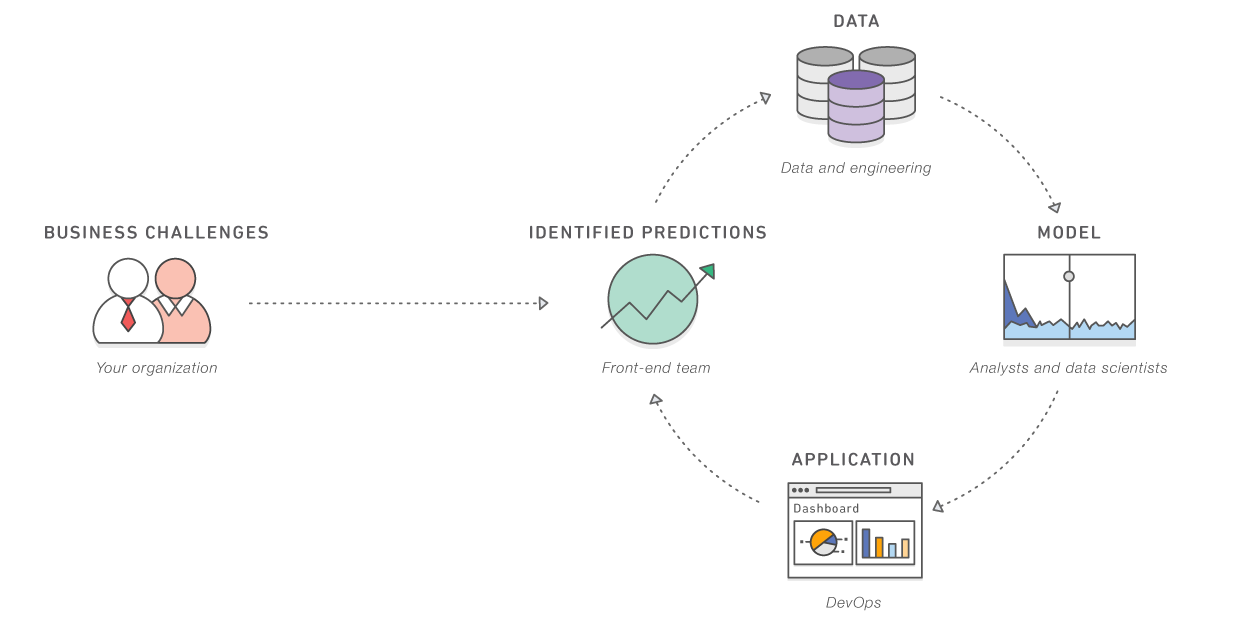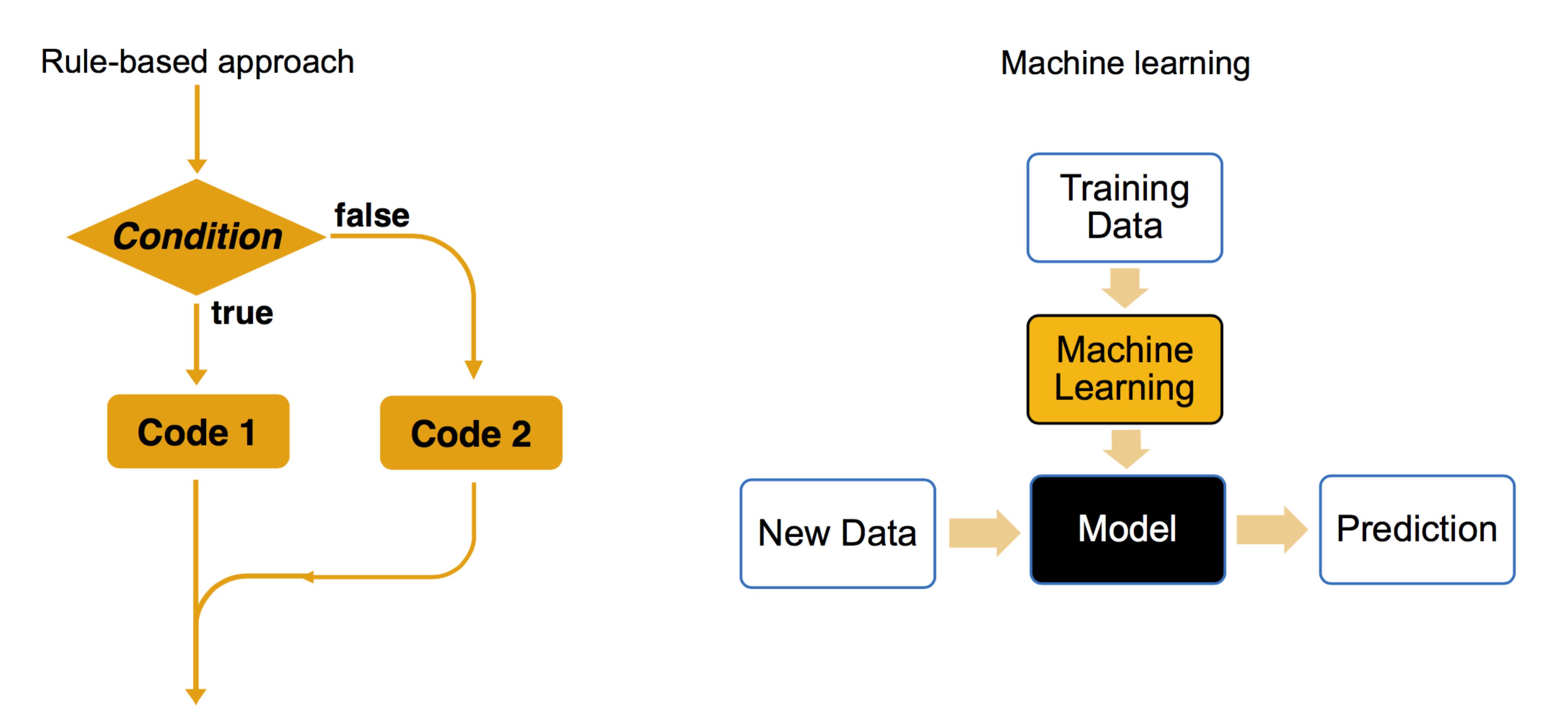Artificial Intelligence Vs Automation: The Right Business Technology
Sanam Malhotra | 1st April 2020

Artificial intelligence (AI) and automation are the watchwords in every business strategy. Aimed at transforming business operations, AI and automation are accelerating progress, efficiency, and economic growth for enterprises. However, for the effective integration of these technologies, decision-makers need to address the core principles of artificial intelligence vs automation. As an emerging AI Development Company, Oodles AI highlights major differences and applications of AI and automation for businesses to generate significant value.
Artificial Intelligence Vs Automation: Understanding the Basics
Firstly, let’s define the two technologies-
Automation: It refers to software or hardware with the ability to mimic well-defined operations with minimal or no human intervention.
Artificial Intelligence: It is the science and engineering of infusing intelligence into machines. AI can not only mimic human activities but can also attain greater efficiency with an ever-expanding horizon of applications.
Artificial Intelligence Vs Automation: Spotting the Difference
1) Data Lake
Data for any business operation is analogous to fuel for automobiles. Every year, businesses generate quintillion bytes of data out of which more than 60% goes unused for analytics, reports Forrester. The cost of this unused data comes in the form of limited business innovation, unsatisfied customers, and low returns.
It is data that becomes the most crucial point of difference between automation and artificial intelligence. The roots of automation can be traced back to the industrial revolution that involved production using-
a) Automatic testing
b) Mechanical labor
c) Control systems, and
d) Operating equipment
Automated solutions, therefore, use minimal data logs to generate output. The end result is programmed to remain constant, for instance, automated email marketing.
“This is the opposite of how AI should work,” says JP Baritugo director at business transformation and outsourcing consultancy Pace Harmon.
Artificial intelligence is powered by data storehouses. From model training to value generation, AI-infused systems work and operate on data including-
a) Neural Networks
b) Graphs
c) Deep machine learning, and
d) Algorithms

Image Source: AWS
It is the reason why the end result using AI models is always uncertain while automation assures fixed results. For instance, image recognition, object detection models, and cloud machine learning solutions.
Also read- Mobilizing Big Data for Cloud-based Predictive Analytics
2) Rule-based Tasks
Another point of difference under artificial intelligence Vs automation is the underlying functionalities and rules to run the model. While automation requires a rule-based or decision-tree approach, artificial intelligence is triggered using tons of data to learn and process outputs.
Under the rule-based methodology, automated solutions are programmed in an “if this, then that” fashion using linguistics and event triggers. With minimal data preparation, rule-based automation can be easily integrated into a business model.

Image Source: EPI-USE blog
However, the fundamentals of artificial intelligence are established in the machine learning approach. It requires developers to integrate the software with machine learning algorithms, enabling the model to recognize patterns and generate data-driven results.
Also read- Dynamic Business Applications of Artificial Intelligence in IoT
3) Self-learning Capabilities
There is a reason why the term “intelligence” is associated with artificial and not automation. It is because AI exhibits human intelligence in the most natural manner while automation is limited to the execution of repetitive tasks.
Data scientists and engineers, therefore, use the metaphor of a ‘child’ for artificial intelligence.
Similar to how a child learns every skill by doing, AI models also need explicit training through data to attain efficiency. The approach enables the child aka AI to develop self-learning capabilities as more and more data is poured into the model. In addition, with a self-learning mechanism, AI is able to scale and alter responses based on the situation. Forecasters believe that the future of AI would not be limited to routine tasks but would encapsulate-
a) Deep analytics
b) Judgments
c) Human-like interactions
d) Predictions, and more.
In contrast to AI’s data-driven learning, automated solutions entail simple coding techniques. Robotic Process Automation is the perfect example of automation which involves training machines to perform repetitive activities without human intervention.
Also read- Transforming eCommerce Businesses with Robotic Process Automation
The Right Business Technology: AI Or Automation?
The debate on artificial intelligence Vs automation is perpetual. In the course of building enterprise applications, businesses often grapple with complex data structuring that eventually discourages artificial intelligence development. On the other hand, automation confines business capabilities to recurrent solutions with no scope for innovation, creativity, and disruption.
Below are the questions that a business must address before adopting any of the two technologies-
a) What is the primary objective of my business? Does it aim to double production or to optimize production?
b) Does my business need computer-aided software or intelligent software?
c) Will AI-powered predictions and recommendations enable my business to serve our customers better?
d) Does my business involve mass data generation to support AI models?
At Oodles, we analyze your business requirements by conducting in-depth research and architectural investigation to suggest the right business technology. With a well-experienced team of AI professionals, we develop the ideal AI and automation solutions that match your business goals. Under automation, we offer Robotic Process Automation and under AI, our capabilities extend to-
a) Natural Language Processing
b) Computer Vision
c) Chatbot Development
d) Machine Learning
e) Predictive Analytics, and more.
Connect with our AI experts to know more about our artificial intelligence services.



